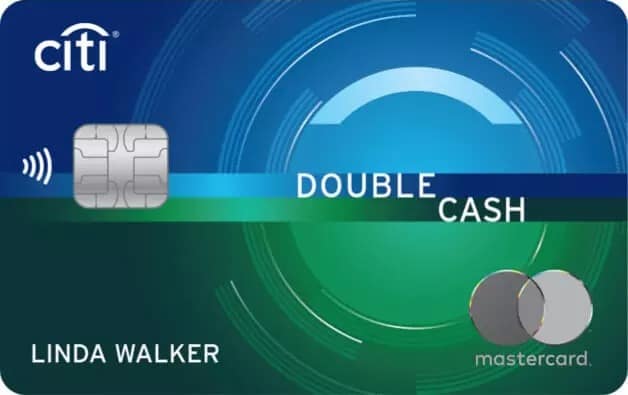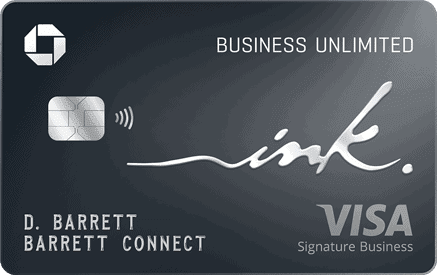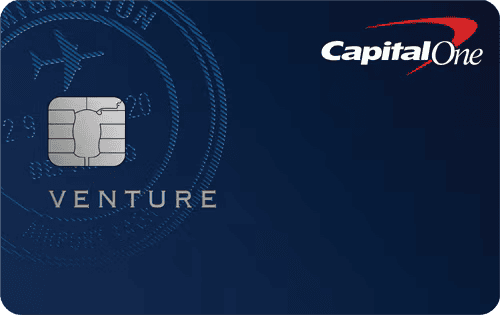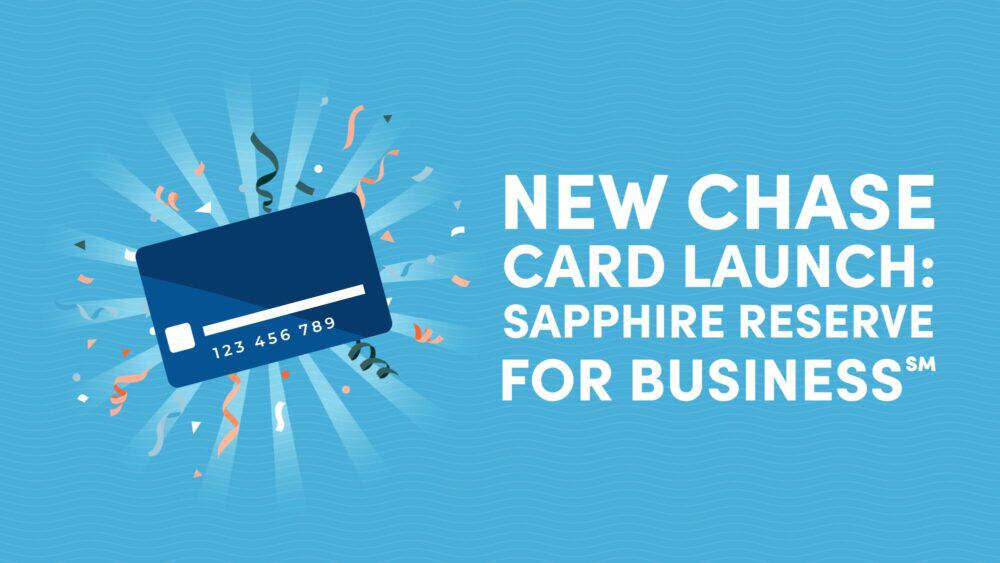
10xTravel is part of an affiliate sales network and receives compensation for sending traffic to partner sites, such as CreditCards.com. This compensation may impact how and where links appear on this site. This site does not include all financial companies or all available financial offers. Terms apply to American Express benefits and offers. Enrollment may be required for select American Express benefits and offers. Visit americanexpress.com to learn more. All values of Membership Rewards are assigned based on the assumption, experience and opinions of the 10xTravel team and represent an estimate and not an actual value of points. Estimated value is not a fixed value and may not be the typical value enjoyed by card members.
Note: Some of the offers mentioned below may have changed or may no longer be available. The content on this page is accurate as of the posting date; however, some of our partner offers may have expired. You can view current offers here.
All information about Chase Freedom Flex® has been collected independently by 10x Travel. Chase Freedom Flex® is no longer available through 10xtravel.com.
Spending and living within your means never hurts—in fact, it’s one of the best ways to avoid financial problems. But life happens. Whether a health crisis, an auto loan or an unforeseeable event causes it, getting into debt happens even to the best of us.
Depending on how much debt you owe, you may consider debt consolidation as a way forward. Debt consolidation rolls all your debts into one payment, making it easier and often cheaper to manage.
However, there are two ways to consolidate your debt: applying for a personal loan or for a 0% APR balance transfer credit card. The decision between a personal loan vs. credit card to fund debt consolidation is determined by your debt-to-income ratio, credit score and the amount and type of debt, along with other contextual factors.
Let’s look at the best debt consolidation strategies to determine whether a credit card or a personal loan is the better choice for you.
Personal Loan vs. Credit Card
A personal loan is a lump sum of money given to you by a financial institution, such as a bank or credit union. Personal loans can be used for almost any purpose, whether it’s for funding household renovations, a new laptop for school or consolidating debt.
A personal loan has a fixed term, typically between two and seven years, with fixed recurring payments. For this reason, it’s also known as an installment loan. Personal loans also come with an origination fee—a type of commission to the creditor—which can be between 1% and 10% of the total loan amount.
In contrast, a credit card offers you revolving credit, allowing you to borrow money as you need up to a certain limit (your credit limit). Instead of having fixed recurring repayments over time as with an installment loan, your credit card repayments vary from month to month based on how much you’ve borrowed each month.
When it comes to the end of a billing cycle, you’re required to make a minimum payment to avoid being charged penalty or late fees. The minimum payment is typically either a percentage of your balance or a flat rate (as long as your balance is under a specific threshold). That said, it’s always best to pay off your balance in full every month because interest is charged on your outstanding balance. By paying off your statement in full, you’ll avoid being charged any interest.
In general, credit cards tend to be used for everyday expenses, such as grocery shopping, dining out and gas. However, they also can be used to cover the cost of bigger expenses, like a family vacation or even college tuition fees.
When it comes to debt consolidation, we’re talking specifically about 0% APR balance transfer credit cards. These cards enable you to transfer your existing credit card debt—along with other types of debt, depending on the card issuer’s policy—onto your new card. You’ll then have an introductory period in which the card doesn’t charge any interest for anywhere between 12 and 21 months, allowing you to pay off your debt without accumulating any more interest.
Unlike personal loans, many credit cards can also earn you rewards, such as points and cash back, incentivizing you to use them.

Pros and Cons of Personal Loans for Debt Consolidation
So, when is a personal loan better than a credit card? Let’s look at the pros and cons of debt consolidation loans to see when a personal loan wins over a credit card.
Pros of Personal Loans
Personal loans tend to offer lower interest rates compared with credit cards. The better your credit score is, the lower your interest payments tend to be. If you have a large amount of high-interest debt, opting to consolidate this debt and pay it off using a personal loan can be a solid strategy.
While a balance transfer credit card doesn’t charge any interest on consolidated debt within the introductory period, it will charge double-digit interest on any remaining debt after the introductory period is over. That means if you can’t pay off your debt within the introductory period, a personal loan is the better option in this case.
Although you’ll need to make recurring fixed payments on your personal loan, typically for a longer period of time compared with that of a credit card, this makes it easier for budgeting. You’ll have more time to pay off your debt and at a lower interest rate.
Personal loans also allow for higher borrowing sums. On a credit card, you’re restricted by your credit limit when it comes to transferring debt and making repayments. With a personal loan, you can borrow up to $100,000 (depending on your credit score, income and other factors), making it ideal for paying off large amounts of high-interest debt.
Cons of Personal Loans
While personal loans have their advantages, there are some considerations to make before applying for one.
Personal loans typically come with an origination fee—also known as a processing, underwriting or administrative fee—which can be anywhere between 1% and 10% of the total amount borrowed. Factors such as your credit score, the amount borrowed and the payment terms affect the origination fee.
Some lenders may allow you to roll the origination fee into the total amount borrowed, but this will simply increase the cost of your monthly payments or the interest rate charged. For this reason, it’s best to pay the fee upfront.
When deciding between a personal loan and a credit card, comparing the origination fee on a personal loan with the balance transfer fee on a credit card can help you see which option will save you more—although that’s not the entire picture.
You also can prequalify with some lenders to check your prospective loan amount, payment terms and origination fee without having your credit score affected.
Some other debt consolidation loan fees to consider are non-sufficient funds (NSF) fees and late fees.
Similarly, as with credit cards, taking out a personal loan for debt consolidation comes with the risk of ending up with even more debt. If you can’t manage your finances or make timely repayments, you’ll spiral into even more debt.

Pros and Cons of Credit Cards for Debt Consolidation
Let’s now look at the pros and cons of using credit cards for debt consolidation.
Pros of Credit Cards
Using 0% APR credit cards for debt consolidation can be a great strategy for paying off debt quickly.
Because you aren’t charged any interest within the first 12 to 21 months of card membership, you save even more money, which you can then reinvest into paying off your debt quicker.
Transferring debt from multiple other credit cards to one 0% APR balance transfer card is an easy way to avoid the spiral of continual minimum payments and increasing interest charges.
If you can pay off your debt within the introductory 0% APR period, a balance transfer card is a great option for debt consolidation. Credit cards also give you more flexibility compared to the fixed payment terms of a debt consolidation loan in case you’re short on cash for a small period of time.
Unlike personal loans, some balance transfer credit cards also offer rewards. This can be in the form of points or cash back, allowing you to earn a return on everyday spending. That said, we don’t recommend adding to the existing debt while you pay down your current debt unless you can pay it off comfortably.
Cons of Credit Cards
Despite the benefits of balance transfer credit cards for debt consolidation, there are some factors to keep in mind.
First, 0% balance transfer credit cards are a suitable option if, and only if, you can pay off your debt within the introductory period. If you can’t manage to do that, you’ll be bombarded by double-digit interest rates at the end of the intro period. This in turn will lead to increased debt, causing you even more financial problems than before.
Second, interest rates are variable, meaning that they can change over time compared with personal loans that have fixed payment terms. However, you want to avoid being charged interest on these cards in the first place.
Credit cards also come with the risk of overspending because you’re restricted only by your credit limit rather than a fixed borrowed sum. If you don’t trust yourself with a credit card, it’s safer to go for a personal loan. That said, both a credit card and a personal loan require financial discipline to manage.
The last problem associated with credit cards is their eligibility requirements. You’ll typically need a good to excellent credit score to qualify for a balance transfer card, which may not always be the case for those with multiple outstanding debts. That’s where a personal loan—which accommodates lenders across the credit scale—may be the better (or the only) option.
Choosing the Best Debt Consolidation Strategy
Whether to choose a personal loan or a balance transfer credit card depends on several factors, including your debt-to-income ratio, credit score, amount and type of debt as well as the timescale in which you can pay the debt.
To begin with, you need to decide whether debt consolidation is a smart move in the first place.
When to Consolidate Your Debt
If you have little debt, forget about debt consolidation for now. For example, if you can pay off your remaining debts within one year and the savings you’d receive through consolidation would be negligible, debt consolidation isn’t worth it.
On the flip side, if your total debt exceeds more than 50% of your annual income, it’s a better idea to look into debt relief options. Debt relief strategies include debt management, declaring bankruptcy or debt settlement, depending on the severity of your circumstances. Likewise, if you have no chance of paying off your debts within the next five years, even if you apply strict budgeting, debt relief is a smarter move.
So, when should you consolidate your debt?
Generally speaking, if the total of your debts is less than 50% of your income, you have the cash flow to make regular payments and your credit score is good enough to qualify for low-interest loans or a 0% APR balance transfer card, debt consolidation is the way to go. In these situations, consolidating your debt is a proven way to save money and get out of debt successfully.
How to Pay off Your Debts: Personal Loan vs. Credit Card
Once you’ve decided that debt consolidation is the way forward, you need to decide whether you’re better off with a personal loan or a balance transfer credit card. Again, the decision comes down to the type of debt, the amount of debt and how long it will take you to settle it.
As a rule of thumb, if you have high-interest debt that will take two or more years to pay off, taking out a personal loan is generally the better option.
This is because 0% APR balance transfer credit cards tend to have a maximum introductory window lasting between 12 and 21 months. After this period, you’ll be hit with double-digit interest rates. Therefore, personal loans are a great way to fund debt consolidation payments that will take years to repay.
Similarly, you need to consider the different types of debt you’re dealing with. For instance, if you have home equity loan debt, you might be better off using a personal loan to consolidate this debt because the principal tends to be large. Personal loans usually have higher transfer limits than credit cards, making home equity loan debt easier to pay off with a personal loan.
Alternatively, auto loan debt tends to have low interest rates, meaning it’s usually wiser to transfer to a debt consolidation loan than a credit card, the latter of which has much higher interest rates (after the introductory period).
That said, both examples above—home equity loan and auto loan—depend on how far you still need to go. If you’ve paid down both debts significantly, transferring them to a 0% APR credit card could actually be the better move. If you can repay the debts completely within the 0% APR period, you’d save even more compared with using a personal loan.
Just keep in mind that not all card issuers allow you to transfer every type of debt to a balance transfer credit card.
On the other hand, a 0% balance transfer credit card is the best choice for debts that you can pay off within the introductory period because you won’t be charged any further interest on the total of your debts. This can save you even more money, enabling you to settle up debts even quicker.
If you’re dealing with high-interest credit card debt only, opening a balance transfer card can be a great option for escaping the spiral of minimum payments and further interest charges.
The Costs of a Personal Loan vs. Credit Card
You also need to consider the fees associated with personal loans vs. credit cards. After all, the decision to consolidate your debt is an attempt to save money.
Personal loans usually come with an origination fee of 1% to 10% of the principal as well as non-sufficient funds fees and late fees if you happen to run into trouble with making timely payments.
The APR charged on loan repayments tends to be anywhere between 7% and 36%, depending on your credit score, the principal, repayment terms and other factors. The better your credit score, the lower the APR you’ll be able to secure.
Credit cards come with a balance transfer fee of 3% to 5% of the total amount transferred. While they don’t charge APR during the introductory period, it’s imperative to ensure you’ve paid off your debt before this period ends to avoid exorbitant interest charges. Certain cards also come with annual fees, but these can be offset through frequent expenditure and maximization of card perks and rewards.
Which option will save you more money depends entirely on the APR you can secure on a loan, your credit score, the origination fee and the balance transfer fee. For this reason, neither option is automatically more beneficial than the other.
Can You Qualify for a Debt Consolidation Loan or Credit Card?
The better your credit score is, the easier it is to get a loan with a low APR. Likewise, most balance transfer credit cards require a good to excellent credit score.
That said, personal loans are also available to individuals with bad to fair credit scores but with higher interest rates charged. That means if your score is on the lower end of the credit spectrum, taking out a personal loan might be your only option. Nevertheless, you may still save money by doing so, making it worthwhile.

Will Debt Consolidation Affect Your Credit Score?
If you know a thing or two about credit bureaus, you may be wondering how debt consolidation affects your credit score. As with all things credit, you should be wary of credit myths.
When it comes to debt consolidation, you’ll likely experience a dip in your credit score in the short run but an increase in the long run.
Opening a new account reduces the overall age of your aggregate accounts, which negatively affects your credit score. Your application for a new credit card or personal loan also results in a hard inquiry on your credit report, shaving a few points off your FICO score. Despite this, you shouldn’t shun debt consolidation. That’s because you can actually improve your credit score in the long run.
Ever-increasing debt, interest and missed payments negatively impacts your credit score. However, by consolidating your debt, you can lower your interest charges and monthly payment requirements, reducing the likelihood of missed payments. This will help improve your credit score.
Similarly, paying off your debt reduces your credit utilization ratio, which also helps boost your credit score. By getting your utilization ratio under 30%, you’ll see improvements in your score.
Best Balance Transfer Credit Cards
Here’s an overview of some of the best balance transfer credit cards on the market.
Citi Double Cash® Card
The Citi Double Cash® Card offers simple rewards and a longer than usual period of intro APR, all for a $0 annual fee.
The card earns 2% cash back on all purchases (1% when you make a purchase and 1% when you pay the bill). This makes it perfect for those purchases that fall outside of typical bonus spending categories, whether its utility bills or online shopping merchants.

Citi Double Cash® Card
$200
cash back
after you spend $1,500 on purchases in the first 6 months of account opening. This bonus offer will be fulfilled as 20,000 ThankYou® Points, which can be redeemed for $200 cash back.
Chase Freedom Unlimited®
The Chase Freedom Unlimited® offers a long period of intro APR, combined with a simple but lucrative earnings structure.
It comes with the following bonus spending categories:
- 5% cash back on travel purchased through Chase Travel℠
- 3% cash back on dining and drugstore purchases
- 1.5% cash back on all other purchases
The Chase Freedom Unlimited credit card also comes with trip cancellation and interruption insurance and an auto rental collision damage waiver—travel protection perks that are hardly ever seen on a $0 annual fee card.
$200
Bonus
after you spend $500 on purchases in your first 3 months from account opening
Chase Freedom Flex®
The Chase Freedom Flex® offers the opportunity for big rewards in addition to a long period of intro APR, for a $0 annual fee.
It offers the following bonus spending categories:
- 5% cash back on travel purchased through Chase Travel℠
- 5% cash back on up to $1,500 in combined purchases across bonus categories each quarter you activate
- 3% cash back on dining, including takeout and drug stores
- 1% cash back on all other purchases
While the card’s rotating bonus spending categories can be a little more complex to keep up with, they offer the opportunity for a lucrative return on your spending. Just like with the Freedom Unlimited, you’ll also enjoy trip cancellation and interruption insurance as well as an auto rental collision damage waiver.

Chase Freedom Flex®
$200
Bonus
after you spend $500 on purchases in your first 3 months from account opening
Wells Fargo Reflect® Card
The Wells Fargo Reflect® Card offers a much longer intro APR period compared with most cards.
Although it doesn’t offer any rewards on spending, it does come with a cell phone protection plan, which you can activate by paying your monthly wireless bill using the Reflect Card. You’ll be insured up to $600 in the event of theft or damage, subject to a $25 deductible. Similarly, it doesn’t charge an annual fee, making it easy to keep in your wallet.
Citi Simplicity® Card
The Citi Simplicity® Card does as the name suggests—it offers a simple single benefit, that being an extra-long period of intro APR. There’s also no late fees or annual fees to worry about with the Citi Simplicity Card.
That said, the lack of ongoing perks makes it difficult to justify holding onto after the intro APR period finishes.

Citi Simplicity® Card
None
Making The Choice
Debt consolidation is a great strategy for reducing the amount of interest you’re being charged on outstanding debt, enabling you to pay it off quicker and stress-free.
Choosing between balance transfer cards or a personal loan to fund your debt consolidation strategy is a key decision. In broad terms, high-interest debt that will take two or more years to pay off is best suited to a personal loan. Alternatively, debt you can pay off within the promotional 0% APR period of a credit card may be better suited to a balance transfer card.
However, you still need to consider the types of debt you’re dealing with, the fees associated with both options and whether you’ll qualify for a low APR personal loan or a balance transfer credit card.
New to the world of points and miles? The Chase Sapphire Preferred® Card is the best card to start with.
With a bonus of 75,000 bonus points after you spend $5,000 on purchases in the first 3 months from account opening. , 5x points on travel booked through the Chase Travel Portal and 3x points on restaurants, streaming services, and online groceries (excluding Target, Walmart, and wholesale clubs), this card truly cannot be beat for getting started!
after you spend $1,500 on purchases in the first 6 months of account opening. This bonus offer will be fulfilled as 20,000 ThankYou® Points, which can be redeemed for $200 cash back.
after you spend $500 on purchases in your first 3 months from account opening
after you spend $500 on purchases in your first 3 months from account opening
Editors Note: Opinions expressed here are author’s alone, not those of any bank, credit card issuer, hotel, airline, or other entity. This content has not been reviewed, approved or otherwise endorsed by any of the entities included within the post.










